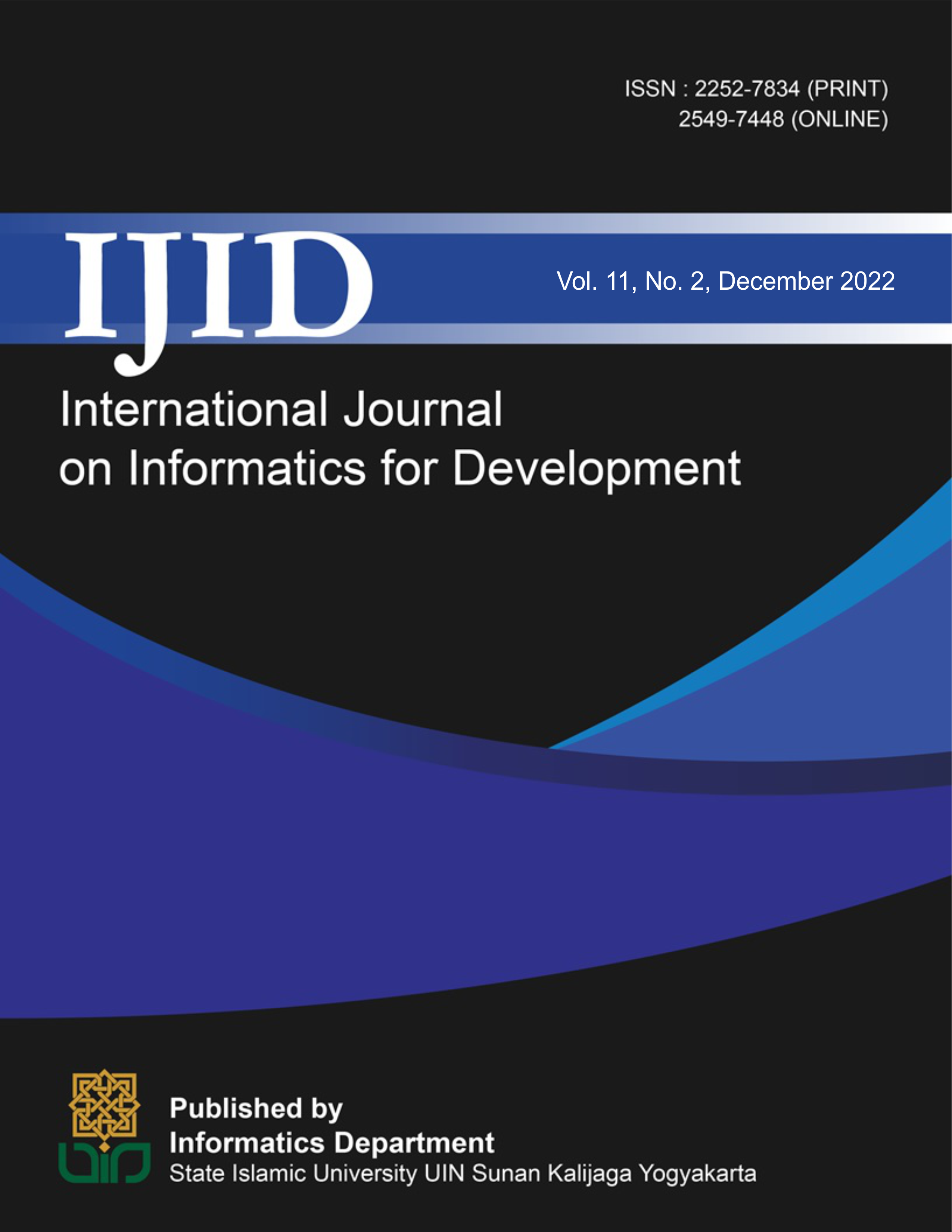Abstract
YBM PLN UIWS2JB provides scholarships for high school students who cannot afford school tuition due to poverty or other economic conditions. Since the target is specific, the foundation must carefully select the recipients to ensure the scholarship is granted to those who deserve it. The predetermined criteria combined with the limited quota available become a difficulty in itself as a large number of applications are coming in. Data mining with a classification method using the K-Nearest Neighbor algorithm is believed to be one of the alternative solutions to solve this problem. This study aims to examine how this method could help in the selection process to determine who is eligible to receive the scholarship, and it also aims to evaluate the algorithm's performance with the optimal K value. The findings of this research showed that the classification method using K-Nearest Neighbor is the potential to be applied in a case such as this. The results found an accuracy of 91% in the selection process and are included in the Excellent Classification category. The optimal K value obtained is K = 5.
References
M. Kholil, Kusrini, and Henderi, “Penerapan Metode K Nearest Neighbord Dalam Proses Seleksi Penerima Beasiswa,” Semin. Nas. Sist. Inf. Dan Teknol. Inf., Pp. 13–18, 2018.
O. Kristanto, “Penerapan Algoritma Klasifikasi Data Mining Id3 Untuk Menentukan Penjurusan Siswa Sman 6,” 2013.
L. S. Putri, “Klasifikasi Minyak Goreng Berdasarkan Frekuensi Penggorengan Menggunakan Metode K-Nearest Neighbor Berbasis Raspberry Pi,” Universitas Brawijaya Malang, 2018.
S. A. P. Aji, H. Oktavianto, and Q. A’yun, “Klasifikasi Penerima Bantuan Dana Desa Menggunakan Metode Knn (K-Nearest Neighbor),” Pp. 1–11, 2020.
S. Farah, A. Wijaya, K. Usman, and S. Saidah, “Analisis Perbandingan K- Nearest Neighbor Dan Support Vector Machine Pada Klasifikasi Jenis Sapi Dengan Metode Gray Level Coocurrence Matrix,” Vol. 2, No. 2, Pp. 93–102, 2022.
S. Julaiha, M. Bettiza, and D. A. Purnamasari, “Penerapan Algoritma K-Nearest Neighbor (Knn) Untuk Klasifikasi Calon Penerima Bidikmisi (Studi Kasus: Universitas Maritim Raja Ali Haji),” Student Online J., Vol. 2, No. 1, Pp. 230–235, 2021.
J. H. Jaman, and S. A. Fahlevi, “Klasifikasi Calon Mahasiswa Bidikmisi Dengan Algoritma K-Nearest Neighbor,” Pros. Annu. Res., Vol. 5, No. 1, Pp. 1–5, 2019.
H. N. Zerlinda, I. Slamet, and E. Zukhronah, “Klasifikasi Calon Penerima Bidikmisi Dengan Menggunakan K-Nearest Neighbor,” Semin. Nas. Penelit. Pendidik. Mat. Umt, Pp. 88–93, 2019.
D. Sartika, and J. Jumadi, “Clustering Penilaian Kinerja Dosen Menggunakan Algoritma K-Means (Studi Kasus: Universitas Dehasen Bengkulu),” Semin. Nas. Teknol. Komput. Sains, Pp. 703–709, 2019, [Online]. Available: Https://Seminar-Id.Com/Semnas-Sainteks2019.Html.
E. Buulolo, Data Mining Untuk Perguruan Tinggi. Deepublish, 2020.
S. Hendrian, “Algoritma Klasifikasi Data Mining Untuk Memprediksi,” Vol. 11, No. 3, Pp. 266–274, 2018.
F. Gorunescu, Data Mining “Concepts, Models, And Techniques.” Berlin: Springer, 2011.
S. R. Cholil, T. Handayani, R. Prathivi, and T. Ardianita, “Implementasi Algoritma Klasifikasi K-Nearest Neighbor,” Indones. J. Comput. Inf. Technol., Vol. 6, No. 2, Pp. 118–127, 2021.
A. Yudhana, Sunardi, and A. J. S. Hartanta, “Algoritma K-Nn Dengan Euclidean Distance Untuk Prediksi Hasil Penggergajian Kayu Sengon,” Transm. J. Ilm. Tek. Elektro, Vol. 22, No. 4, Pp. 123–129, 2020.
M. Nishom, “Perbandingan Akurasi Euclidean Distance , Minkowski Distance , Dan Manhattan Distance Pada Algoritma K- Means Clustering Berbasis Chi-Square,” Vol. 04, No. 01, Pp. 20–24, 2019, Doi: 10.30591/Jpit.V4i1.1253.
Sugiyono, “Metode Penelitian Kuantitatif Kualitatif Dan R&D.” 2013.
I. Santoso, and H. Madistriyanto, “Metode Penelitian Kuantitatif.” Indigo Media, 2021.
S. Arikunto, “Prosedur Penelitian: Suatu Pendekatan Praktik.” Rineka Cipta, 2014.
B. P. Statistik, Klasifikasi Baku Jenis Pekerjaan Indonesia. Jakarta: Badan Pusat Statistik, 2002.
L. S. Rakasiwi, and A. Kautsar, “Pengaruh Faktor Demografi Dan Sosial Ekonomi Terhadap Status Kesehatan Individu Di Indonesia,” Kaji. Ekon. Dan Keuang., Vol. 5, Pp. 146–157, 2021.
Elmanora, I. Muflikhati, and Alfiasari, “Kesejahteraan Keluarga Petani Kayu Manis,” J. Ilmu Kel. Dan Konsum., Vol. 5, Pp. 58–66, 2012.
I. K. Hasan, Resmawan, and J. Ibrahim, “Perbandingan K-Nearest Neighbor Dan Random Forest Dengan Seleksi Fitur Information Gain Untuk Klasifikasi Lama Studi Mahasiswa,” Vol. 5, No. 1, Pp. 58–66, 2022.
X. Wu Et Al., “Top 10 Algorithms In Data Mining,” Vol. 06, 2007.

This work is licensed under a Creative Commons Attribution-NonCommercial-NoDerivatives 4.0 International License.
